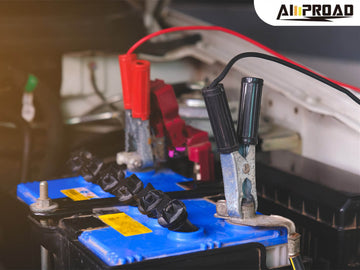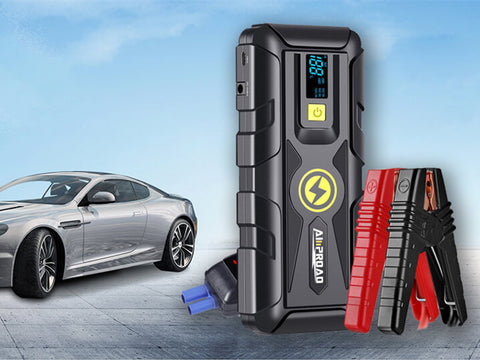
Jump-starting a car can revive a dead battery, but its impact on battery longevity depends on several factors. The sudden power surge during the process can strain the battery, especially if it was already weakened. If the battery’s failure resulted from age or underlying issues, a jump start may only provide a temporary fix, potentially accelerating further deterioration. Repeated jump starts without addressing the root cause can also shorten its lifespan. Monitoring battery health and ensuring proper charging can help maintain long-term performance and reliability.
Can Jump Starting Affect Car Battery Longevity?
Jump starting a car can have potential impacts on the longevity of the recipient battery. While jump starting is often a lifesaver in emergency situations, the sudden surge of power to the dead battery can place stress on its internal components. This stress can lead to accelerated wear and tear, potentially shortening the overall lifespan of the battery. Additionally, if the battery was already nearing the end of its life or experiencing underlying issues, jump starting may exacerbate these problems, hastening the need for a replacement.
Several factors may influence the health of the battery following a jump start. The age and condition of the battery play a significant role, as older or weakened batteries are more susceptible to damage from the jump start process. Additionally, the length of time the battery remained discharged before jump starting can impact its health. Extended periods of discharge can cause sulfation, a condition where lead sulfate crystals form on the battery plates, reducing its ability to hold a charge and ultimately shortening its lifespan.
Using a car jump box instead of another vehicle to jump start a car can mitigate some of the potential risks to the recipient battery. Jump starters are portable battery packs specifically designed for jump starting vehicles without the need for a donor vehicle. Unlike traditional jump starting methods, which rely on another vehicle's battery to provide power, jump starters deliver a controlled amount of power directly to the dead battery. This can reduce the risk of overloading the battery and causing damage. Additionally, jump starters are designed to be user-friendly and compact, making them convenient tools to have on hand for emergency situations.
Ultimately, while jump starting a car can provide a temporary solution to a dead battery, it's essential to consider the potential impacts on battery longevity. Using caution during the jump start process and considering alternatives like jump starters can help minimize risks and protect the health of your car's battery in the long run. Regular maintenance and monitoring of the battery's condition can also help identify any issues early and prolong its lifespan.
What is Jump Starting?
Jump starting is a technique used to start a car with a dead battery by using the power from another vehicle's battery. The process involves connecting the dead battery to the battery of a functioning vehicle using jumper cables. Typically, the jumper cables are color-coded, with red indicating positive and black indicating negative terminals. Once the cables are properly connected, the functioning vehicle is started, and the engine is allowed to run for a few minutes, transferring power to the dead battery. Afterward, the engine of the vehicle with the dead battery can be started, hopefully providing enough power to get it running again.
Several common scenarios may lead to needing a jump start. One frequent reason is leaving lights or accessories on when the engine is off, draining the battery over time. Extreme weather conditions, such as cold temperatures, can also reduce a battery's ability to hold a charge, increasing the likelihood of needing a jump start. Additionally, old or failing batteries may struggle to maintain sufficient charge, resulting in unexpected breakdowns. Other factors, such as electrical issues or alternator problems, can also contribute to a dead battery and necessitate jump starting. Overall, jump starting serves as a temporary solution to get a vehicle running again in emergency situations when the battery is unable to provide the necessary power to start the engine. However, it's important to address the underlying cause of the dead battery to prevent future issues and ensure the continued reliability of your vehicle.
How Does Jump Starting Work?
Jump starting a car is a straightforward process that requires a few key components. First, you'll need a set of jumper cables, typically featuring red and black clamps to denote positive and negative connections. The process begins by positioning both vehicles close enough for the jumper cables to reach between their batteries. With both cars turned off, connect one end of the red (positive) cable to the positive terminal of the dead battery and the other end to the positive terminal of the functioning battery. Next, attach one end of the black (negative) cable to the negative terminal of the functioning battery and the other end to a metal surface on the car with the dead battery, such as a bolt or unpainted metal.
The functioning vehicle's battery plays a crucial role in jump starting. When the donor vehicle is started, its battery provides the necessary power to the dead battery through the jumper cables. As the engine runs, the alternator generates electricity, which is then transferred to the dead battery, effectively charging it. This process allows the vehicle with the dead battery to draw power and start its engine, providing a temporary boost to get back on the road.
Knowing how to boost a car can be a valuable skill in emergency situations, but it's essential to follow safety precautions to avoid accidents or damage to the vehicles. Always ensure that both vehicles are in park or neutral with their engines turned off before connecting the jumper cables. Additionally, double-check the polarity of the cables to avoid reverse connections, which could cause electrical damage. Following these steps correctly can help safely jump start a car and restore power to its battery.

What Precautions Should You Take When Jump Starting a Car?
When jump starting a car, it's crucial to prioritize safety to avoid accidents and prevent damage to the vehicle's electrical system. Firstly, ensure both vehicles are in park or neutral with their engines turned off before connecting the jumper cables. This prevents any unexpected movement of the vehicles during the jump start process. Additionally, always handle the jumper cables with care, avoiding contact between the clamps to prevent sparking. When connecting the cables, follow the correct polarity by attaching the red (positive) clamp to the positive terminal of the dead battery and the functioning battery, and the black (negative) clamp to a metal surface on the car with the dead battery. This prevents electrical damage and ensures a safe transfer of power.
To minimize potential damage to car batteries during jump starting, consider using a jump starter instead of another vehicle's battery. Jump starters are portable battery packs specifically designed for jump starting vehicles and deliver a controlled amount of power directly to the dead battery. This reduces the risk of overloading the battery and causing damage. Additionally, avoid revving the engine excessively or leaving the vehicle idling for an extended period after jump starting, as this can strain the battery and lead to overheating. Once the vehicle is running, disconnect the jumper cables in the reverse order of connection to prevent any electrical issues, and allow the engine to run for a few minutes to recharge the battery fully. By following these precautions, you can safely jump start your car without risking damage to the battery or electrical system.

Are There Alternatives to Jump Starting?
While jump starting is a common method for starting a car with a dead battery, several alternatives can be considered, each with its own advantages and potential impacts on battery health. One alternative is using a portable jump starter, which is a compact battery pack designed specifically for jump starting vehicles. Unlike traditional jump starting methods that rely on another vehicle's battery, portable jump starters, such as those offered by Amproad, which is a compact battery pack designed specifically for jump starting vehicles. Unlike traditional jump starting methods that rely on another vehicle's battery, portable jump starters deliver power directly to the dead battery, reducing the risk of damage from improper connections or voltage surges. Additionally, portable jump starters are convenient to use and can be stored in the trunk of a vehicle for emergency situations.
Another alternative method for starting a car is push-starting or bump-starting, which is typically used for vehicles with manual transmissions. This method involves getting the vehicle moving by pushing or rolling it while in gear, then releasing the clutch to engage the engine and start it. Push-starting can be effective in starting a car with a dead battery, but it requires a significant amount of physical effort and may not be suitable for all situations or vehicles. Additionally, push-starting does not provide the same level of control over the starting process as jump starting or using a portable jumper starter, which could potentially lead to damage if not done correctly.
When comparing alternative methods for starting a car, it's essential to consider their impact on battery health. While jump starting and using a portable starter jump deliver a controlled amount of power directly to the dead battery, push-starting relies on the vehicle's momentum to engage the engine, which may not provide sufficient power to fully recharge the battery. As a result, push-starting may not be as effective in restoring battery health and could lead to additional strain on the battery over time. Ultimately, the best alternative method for starting a car will depend on the specific circumstances and preferences of the vehicle owner.
How Can You Maintain Your Car Battery's Longevity?
Maintaining your car battery is essential for ensuring its longevity and reliable performance. One crucial aspect of proper battery maintenance is to regularly inspect and clean the battery terminals and connections. Over time, corrosion can build up on the terminals, hindering the flow of electricity and potentially causing starting issues. Cleaning the terminals with a mixture of baking soda and water and ensuring they are tightly secured can help prevent corrosion and maintain a strong connection.
Additionally, monitoring the battery's fluid levels, if applicable, is essential for prolonging its lifespan. Some car batteries require periodic maintenance to check and top up the electrolyte levels with distilled water. Keeping the electrolyte levels within the manufacturer's recommended range helps maintain proper battery function and prevents damage from excessive drying or overfilling.
To further extend the lifespan of your car battery, consider implementing strategies to minimize unnecessary strain on the electrical system. Avoid leaving accessories or lights on when the engine is off, as this can drain the battery over time. Additionally, limit short trips whenever possible, as frequent starts and stops can put additional stress on the battery and reduce its overall lifespan. Regularly driving your vehicle for longer distances allows the alternator to recharge the battery fully, maintaining its charge and health.
Another essential aspect of battery maintenance is to store your vehicle properly during periods of inactivity. If you plan to leave your car unused for an extended period, such as during vacations or seasonal storage, consider disconnecting the battery or using a trickle charger to maintain its charge. Storing the battery in a cool, dry location away from direct sunlight can also help prevent premature deterioration. By following these tips and strategies, you can effectively maintain your car battery's longevity and ensure reliable performance for years to come.


